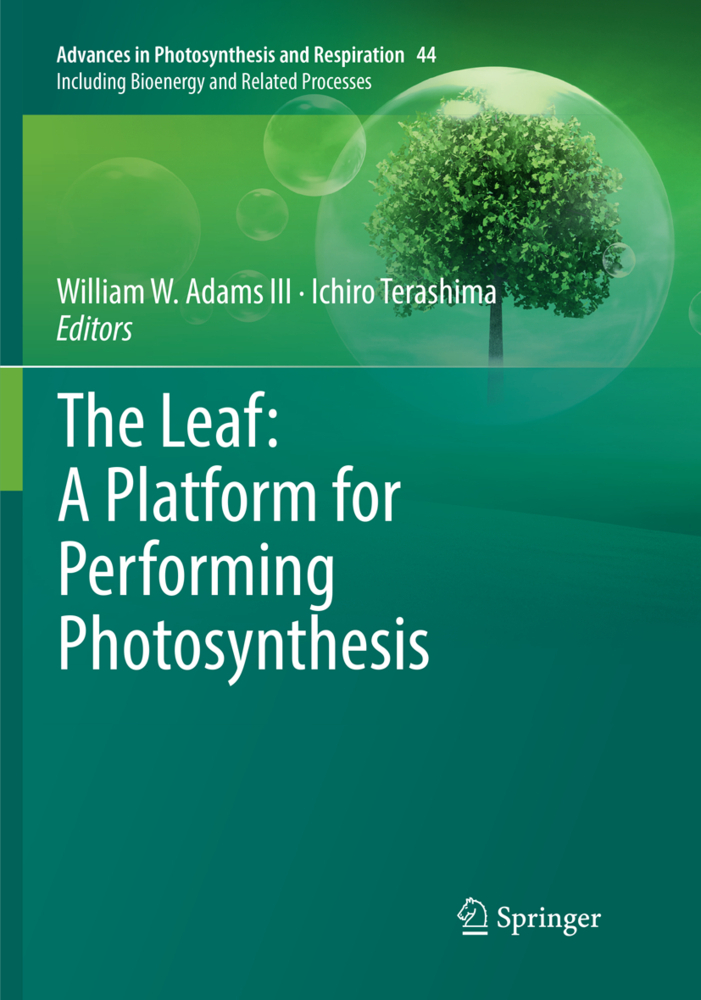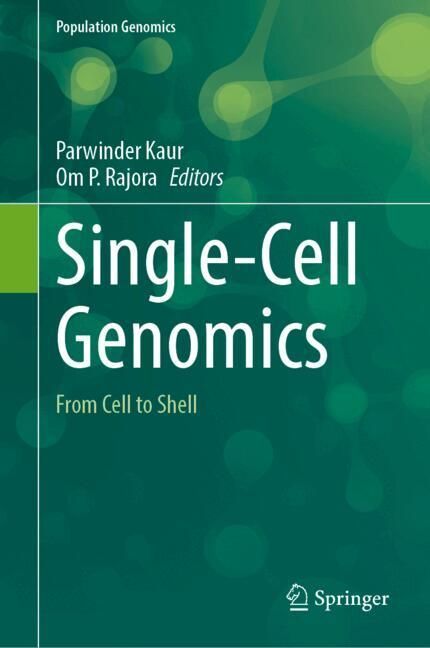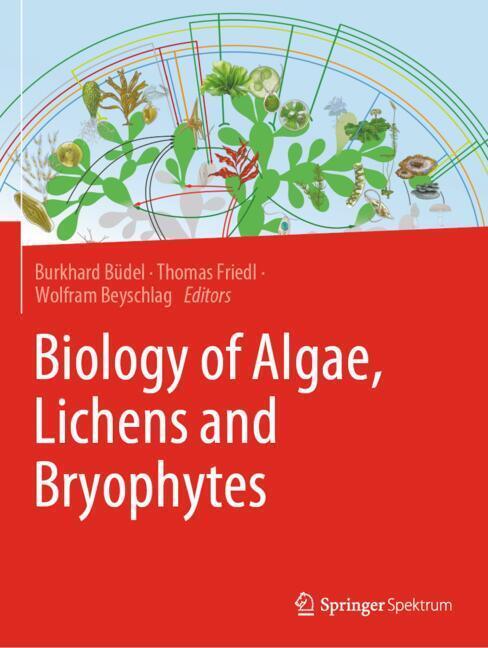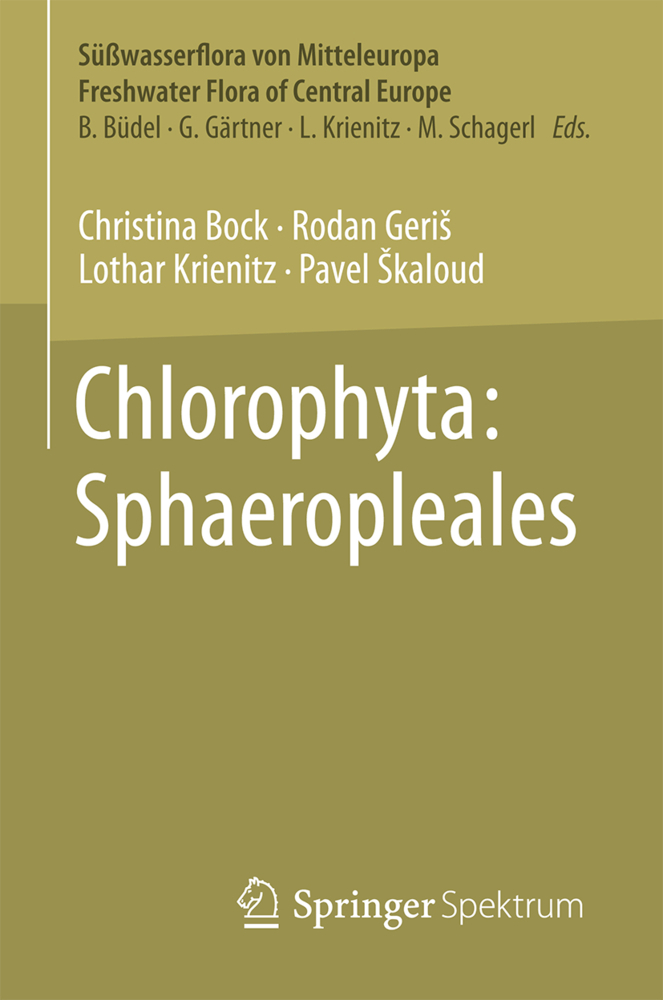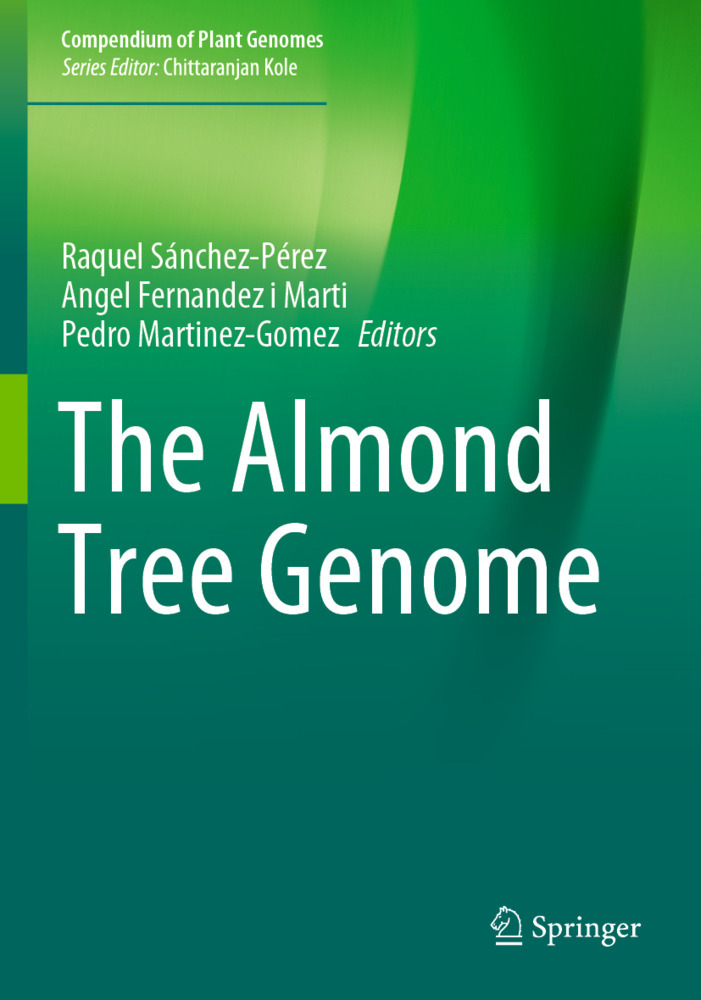The Leaf: A Platform for Performing Photosynthesis
The Leaf: A Platform for Performing Photosynthesis
The leaf is an organ optimized for capturing sunlight and safely using that energy through the process of photosynthesis to drive the productivity of the plant and, through the position of plants as primary producers, that of Earth's biosphere. It is an exquisite organ composed of multiple tissues, each with unique functions, working synergistically to: (1) deliver water, nutrients, signals, and sometimes energy-rich carbon compounds throughout the leaf (xylem); (2) deliver energy-rich carbon molecules and signals within the leaf during its development and then from the leaf to the plant once the leaf has matured (phloem); (3) regulate exchange of gasses between the leaf and the atmosphere (epidermis and stomata); (4) modulate the radiation that penetrates into the leaf tissues (trichomes, the cuticle, and its underlying epidermis); (5) harvest the energy of visible sunlight to transform water and carbon dioxide into energy-rich sugars or sugar alcohols for export to the restof the plant (palisade and spongy mesophyll); and (6) store sugars and/or starch during the day to feed the plant during the night and/or acids during the night to support light-driven photosynthesis during the day (palisade and spongy mesophyll). Various regulatory controls that have been shaped through the evolutionary history of each plant species result in an incredible diversity of leaf form across the plant kingdom. Genetic programming is also flexible in allowing acclimatory phenotypic adjustments that optimize leaf functioning in response to a particular set of environmental conditions and biotic influences experienced by the plant. Moreover, leaves and the primary processes carried out by the leaf respond to changes in their environment, and the status of the plant, through multiple regulatory networks over time scales ranging from seconds to seasons. This book brings together the findings from laboratories at the forefront of research into various aspects of leaf function, with particular emphasis on the relationship to photosynthesis.
Chapter 1. A Consideration of Leaf Shape Evolution in the Context of the Primary Function of the Leaf as a Photosynthetic Organ
Chapter 2. Leaf Vasculature and the Upper Limit of PhotosynthesisChapter 3. Export of Photosynthates from the Leaf
Chapter 4. Leaf Water Transport: A Core System in the Evolution and Physiology of Photosynthesis
Chapter 5. Leaf Anatomy and Function
Chapter 6. Coordination Between Photosynthesis and Stomatal Behavior
Chapter 7. CO2 Diffusion Inside Photosynthetic Organs
Chapter 8. Molecular Mechanisms Affecting Cell Wall Properties and Leaf Architecture
Chapter 9. Significance of C4 Leaf Structure at the Tissue and Cellular Levels
Chapter 10. Functional Anatomical Traits of the Photosynthetic Organs of Plants with Crassulacean Acid Metabolism
Chapter 11. Structural and Functional Characteristics, Tradeoffs and Win-Wins by Leaves Photosynthesizing in Aquatic Environments
Chapter 12. Leaf Photosynthesis of Upland and Lowland Crops Grown under Moisture-Rich Conditions
Chapter 13. Photosynthesis in Poor Nutrient Soils, in Compacted Soils, and under Drought
Chapter 14. The Role of Leaf Movements for Optimizing Photosynthesis in Relation to Environmental Variation
Chapter 15. Photosynthetic and Photosynthesis-Related Responses of Japanese Native Trees to CO2: Results from Phytotrons, Open-Top Chambers, Natural CO2 Springs,and Free-Air CO2 Enrichment
Chapter 16. The Leaf Economics Spectrum and its Underlying Physiological and Anatomical Principles
Chapter 17. Leaf Photosynthesis Integrated Over Time
Chapter 18. Photosynthetic Modulation in Response to Plant Activity and Environment.
Adams, William W.
Terashima, Ichiro
| ISBN | 978-3-030-06689-5 |
|---|---|
| Artikelnummer | 9783030066895 |
| Medientyp | Buch |
| Copyrightjahr | 2018 |
| Verlag | Springer, Berlin |
| Umfang | LI, 575 Seiten |
| Abbildungen | LI, 575 p. 145 illus., 111 illus. in color. |
| Sprache | Englisch |

